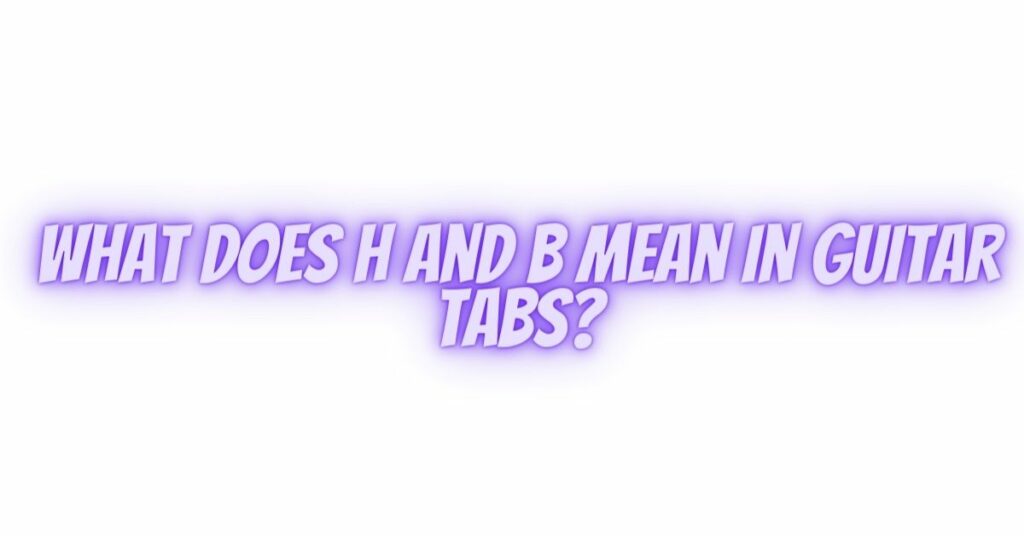Guitar tabs, a popular notation system among guitarists, provide a visual representation of how to play music on the guitar. While many symbols and notations are used in tabs, two common ones are “H” and “B.” In this comprehensive guide, we will explore the meanings and applications of “H” and “B” in guitar tabs, helping you understand how to interpret and use them in your playing.
1. Basics of Guitar Tabs:
Before we delve into the meanings of “H” and “B” in guitar tabs, it’s important to understand the fundamental structure of tabs:
- Strings: The horizontal lines in a tab represent the strings of the guitar, with the top line typically denoting the high E string, and the bottom line representing the low E string.
- Numbers: Numbers on the lines indicate which fret to press on that string. For example, “2” on the high E string instructs you to press the second fret on that string.
2. “H” in Guitar Tabs:
The symbol “H” in a guitar tab stands for a “hammer-on.” A hammer-on is a guitar technique that allows you to produce a smooth and connected sound between two notes by playing the first note and then, without picking the string again, using another finger to sound the second note by tapping the string at a higher fret. The “H” indicates where the hammer-on should occur.
Here’s a step-by-step explanation of how “H” is used in guitar tabs:
- The “H” is followed by the number representing the fret where you play the first note.
- To execute the hammer-on, play the first note, then quickly and firmly press your finger on the higher fret to produce the second note without re-picking the string.
- Hammer-ons are used to create a legato, or smooth, effect in your playing.
3. “B” in Guitar Tabs:
The symbol “B” in a guitar tab stands for a “bend.” Bending is a technique that allows you to change the pitch of a note by physically bending the string. The “B” indicates where the bend should occur and how much to bend the note.
Here’s a step-by-step explanation of how “B” is used in guitar tabs:
- The “B” is followed by a number, which indicates how many half steps (semitones) you should bend the note. For instance, “B7” means you should bend the note by a full step, which is equivalent to two half steps.
- To execute the bend, play the original note, and then use your fingers to push the string up or down to achieve the desired pitch.
- Bends can add expression and emotion to your playing and are often used for creating dramatic, bluesy, or rock-style guitar solos.
4. Combining “H” and “B” with Numbers:
In some tabs, you may encounter “H” or “B” along with a number, such as “H5” or “B3.” In such cases, the number indicates the fret where you should execute the hammer-on or bend. For example, “H5” would mean to execute a hammer-on at the fifth fret, and “B3” would indicate a bend at the third fret.
5. Tips and Considerations:
- Be mindful of the strength and speed with which you execute hammer-ons and bends to achieve the desired effect.
- Listen to the original recording of a song to get a sense of the timing and expression required for hammer-ons and bends.
- Experiment with different bending techniques, such as full bends, half bends, and release bends, to add variety to your playing.
Conclusion:
Understanding the meaning and application of “H” and “B” in guitar tabs is essential for any guitarist seeking to accurately interpret and play a song. Hammer-ons and bends are valuable techniques that can enhance the expressiveness and dynamics of your playing. By mastering these notations, you’ll be better equipped to incorporate hammer-ons and bends into your guitar repertoire, creating a more nuanced and captivating musical experience.


